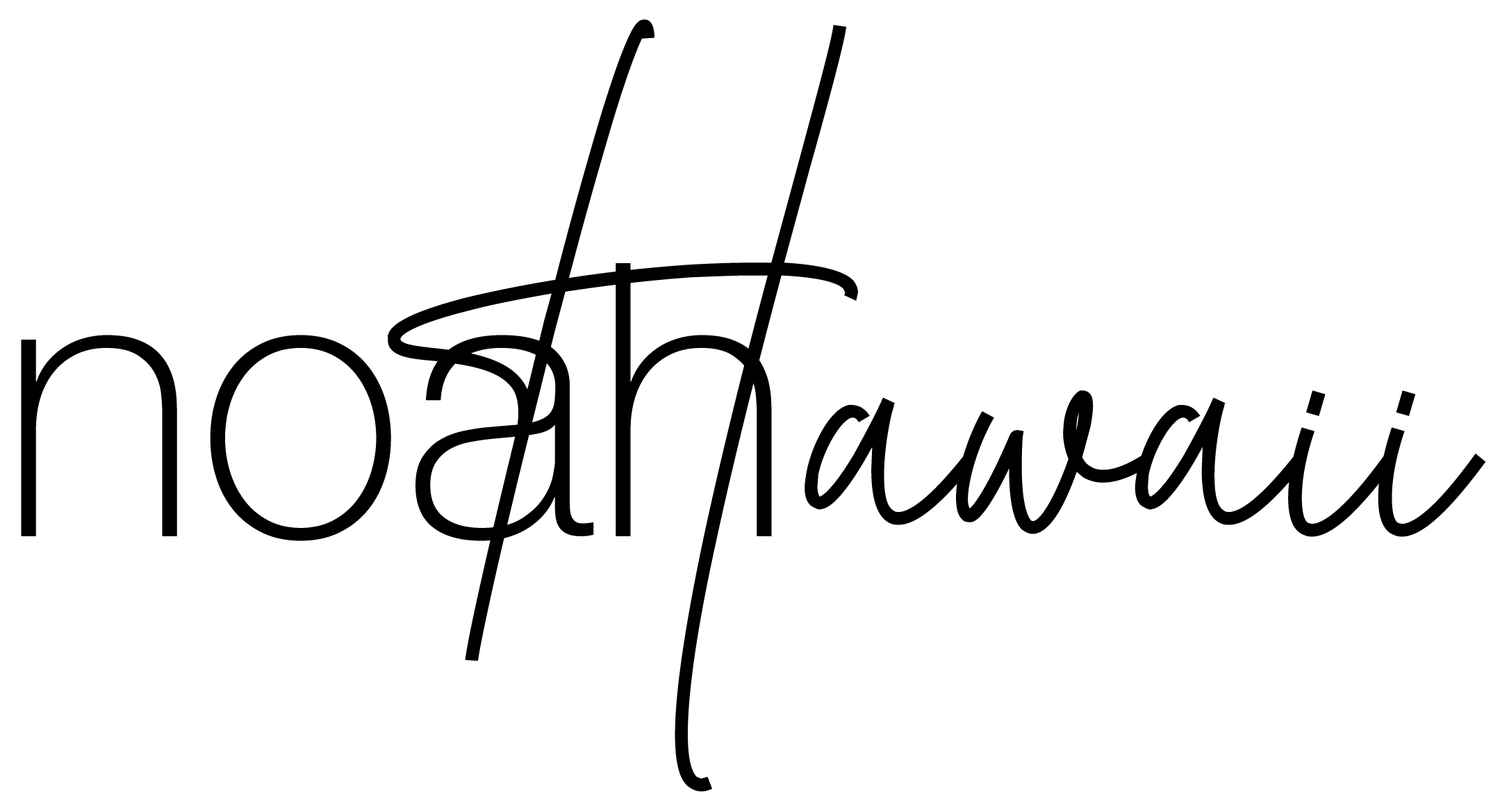Hiking the Waiheʻe Ridge Trail on Maui, Hawaiʻi
Distance (Roundtrip): 4.4 miles / 7.1 km
Elevation Gain: 1,400 ft. / 427 m
With its stunning views of the West Maui Mountains and Haleakalā to the east, the Waiheʻe Ridge Trail on Maui is one of the most beautiful, but also most popular hikes on the island.
That being said, the best advice I can give is to start hiking early, as the Waiheʻe Ridge Trail is one of the busiest trails on Maui.
Furthermore, if you arrive any later than when the trail opens, you’re likely not going to find parking at the trailhead, meaning you’ll likely have to park up to 0.8 miles (1.3 km) away in the overflow parking lot.
Waiheʻe Ridge Trailhead Parking
Parking for the Waiheʻe Ridge Trail is located in a small parking lot off of Kahekili Highway at the base of the trail, which typically fills up shortly after the trail opens.
For this reason, I recommend arriving when the trail opens, as mentioned previously, or you will not only be struggling to find parking but also hiking a much more crowded trail than if you had started early.
Additionally, when traffic backs up on the narrow road that leads to the trailhead, turning around to drive back down can be a challenge.
Google Maps Directions: Waiheʻe Ridge Trailhead
Waiheʻe Ridge Overflow Parking
If you can’t find parking near trailhead, overflow parking for the Waiheʻe Ridge Trail can be found just off of Kahekili Highway, outside of the gate that regulates the hours for the trail.
However, as previously mentioned, parking in the overflow lot adds an additional 0.8 miles (1.3 km) to the hike each way and an additional 400 ft. (122 m) of elevation gain.
My Hawaiʻi Hiking Checklist
Osprey 3L Water Bladder - The Osprey 3L water bladder is the most universal hiking and backpacking water bladder on the market, and it’s my go-to because of the slide-off seal that allows it to be quickly filled from the top. Additionally, individual parts are easily replaceable, such as the bite valve.
Blister / Heel Protectors - I swear by these cheap, amazing heel protectors to prevent blisters for nearly every kind of hiking and backpacking that I do!
Black Diamond Headlamp - Personally, I recommend the Black Diamond Storm because it is one of the brightest, lightest, and longest-lasting headlamps on the market—and trust me, the weight-to-battery-life ratio really does matter!
Hiking / Trail Running Shoes - Depending on the type of trail, I prefer to use either the Keen Targhee for longer, more rugged hiking or the HOKA Zinal Trail-Running Shoe for lighter, less intense trails. In either case, both have been amazing to me for many years across countless environments, and both can be found in men’s and women’s sizes. - (Men’s Keen / Women’s Keen) (Men’s HOKA / Women’s HOKA)
Waterproof Rain Shell - You never know when it may rain, and I’ve learned over the years that a rain shell is far better than a rain jacket. By this, I mean that it’s best to have something that the water will roll right off of, which is why I recommend the Patagonia Torrentshell 3L available in both men’s and women’s sizes.
High SPF Sunscreen - Packing high-SPF sunscreen is a must for long days outside!
Hiking the Waiheʻe Ridge Trail
The Waiheʻe Ridge Trail is a nearly constant uphill hike, ascending roughly 1,400 ft. (427 m) over the course of 2.2 miles (3.5 km).
For this reason, I recommend packing at least 2-3L of water per person, as I saw people hiking of all ages without water—from families with children to senior citizens.
In any case, the Waiheʻe Ridge Trail begins up a steep service road before branching off on the actual trail, located just 0.1 miles (0.2 km) ahead.
Then, once at the split in the photo below, turn left to continue up Waiheʻe Ridge.
Eventually, the trail comes to a fence, which is the start of the switchbacks through the Cook Pine-Eucalyptus-Strawberry Guava forest.
From the viewpoint at the bench, you can see Makamakaʻole Falls, located just to the north.
Waiheʻe Valley Viewpoint
For many hikers, this first platform at about 0.8 miles (1.3 km) up Waiheʻe Ridge is a popular turnaround point.
However, I highly encourage continuing on to the summit, as Lanilili is one of the most beautiful viewpoints on Maui.
In my opinion, the first 0.8 miles (1.3 km) to the first platform should be considered the easy 'half' of Waiheʻe Ridge.
By this, I mean that the remaining 1.4 miles (2.3 km) to the summit of Puʻu Lanilili gets a bit more challenging, as the trail gets steeper.
Shortly after the first platform, Waiheʻe Ridge begins ascending a series of switchbacks up to a small meadow just below the summit.
After the meadow, which may or may not be muddy, the Waiheʻe Ridge Trail climbs a few more switchbacks that lead up to the summit.
Puʻu Lanilili
According to the USGS, the summit of the Waiheʻe Ridge Trail, also known as Puʻu Lanilili, is 2,563 ft. (781 m), or about halfway up the West Maui Mountains (Puʻu Kukui).
Native Plants on the Waiheʻe Ridge Trail
Once above the lower Eucalyptus forest, the Waiheʻe Ridge Trail is one of the better hikes on Maui to find a variety of native Hawaiian plants. Some of these include ʻŌhiʻa lehua, Naupaka, Hōʻawa, Kāmakahala, Uki Grass, and Koa, to truly only name a few.
All said, if you would like to learn more about these and tons of other native plants from across the islands, I encourage you to check out my post.
Read My Separate Post: Native Hawaiian Plant Guide
More Maui Adventures
If you’re interested in reading about some more amazing Maui adventures, check out my separate posts below!
Best Hotels & Vacation Rentals on Maui
Since Maui is such a big island and driving from place to place can take a long time, many of the best places to stay are located on all different sides of the island.
I recommend starting your search on VRBO to compare places from Kīhei, Kahului, Lāhainā, Kāʻanapali, and Hāna.
Maui Airport-Hotel Shuttle
Prices on ride-share apps like Uber/ Lyft cannot beat the price of booking your hotel or vacation rental shuttle prior to arrival.
That being said, the shuttle options below are incredibly cheap, and they are a great option to get across North, South, West, and Upcountry Maui!
Best Way to Book Rental Cars!
I travel quite a bit, and I know firsthand that finding a good rental car deal can be a challenge, but that’s why I recommend comparing all of your options with Discover Cars.
In short, Discover Cars is a well-known, reputable business that allows you to search for the best deal across companies, and they have the best full-refund cancellation policy I’ve ever seen, valid up to 72, or sometimes even 48, hours prior to your reservation!
Book Here: Discover Cars
Visiting Other Islands
If you are visiting Maui or heading to another island, check out some of my personal recommendations for Oʻahu, Maui, Kauaʻi, Molokai, Lānaʻi, and Hawaiʻi Island (Big Island) in these separate posts.
If you’re trying to decide which island is right for your visit, check out my overview about each island in the post below.
Read My Separate Post: What is the Best Hawaiian Island to Visit?
What is the Best Time of Year to Visit Hawaiʻi?
The weather in Hawaiʻi can often appear to be warm and beautiful throughout the year, but in my experience, there is a lot more to consider when planning what time of year to visit the islands, such as what island you are considering, what sides of each island do you plan to stay, what activities are you most interested in, the wildlife, and countless other nuanced variables that can all impact the type of trip you can expect to have.
For these reasons, I highly recommend reading through my separate article to not only understand my thoughts regarding the best time of year to come to Hawaiʻi but also what you need to consider based on the time of year that you plan to visit.
Read My Separate Post: What is the Best Time of Year to Visit Hawaiʻi?
Safety
All hikes in Hawaiʻi should not be compared to trails outside of the islands, and hikers should exercise due caution on every adventure, given that many are extremely dangerous.
By this, I mean that Hawaiʻi is known for hot, humid weather, steep, dramatic, and unstable cliffs, and flash floods, which can occur without warning. Therefore, it is important that you check the local forecast, understand the physical condition of your entire group, and pack sufficient food and water before attempting any adventure.
Disclaimer
All information provided on this blog is for informational purposes only and is not intended to be a substitute for information or advice from qualified professionals or managing agencies.
Noah Lang Photography LLC makes no representations or warranties regarding the accuracy or completeness of the information provided here, and readers should use their own discretion, judgement, and seek professional advice where it is appropriate.
Furthermore, Noah Lang Photography LLC shall not be held responsible for any injuries, lost individuals, or legal issues arising from the use of information provided on this website, and if applicable, the above safety disclaimer should be referenced to provide a generic overview of the risks involved.
All said, the content on this blog is for the sole use of Noah Lang Photography LLC, and unauthorized use or reproduction of this content is strictly prohibited.
Disclosure
This post is not sponsored.
However, some of the links in this post are affiliate links, which means that I may earn a small commission if a purchase is made through one of those links. This commission comes at no additional cost to you, and I only recommend products that I personally use and believe will add value to my readers. Thank you for your support, which enables me to continue creating more!
To read the full privacy policy, click here.

About This Blog
Noah Lang Photography, also known as @noahawaii, is 100% reader-supported!
I do not accept guest articles or sponsored content of any kind on my blog, which is why, if you enjoy the outdoor and travel content I create, please consider buying me a coffee!
I appreciate your support, which helps me continue to keep this blog alive!




























